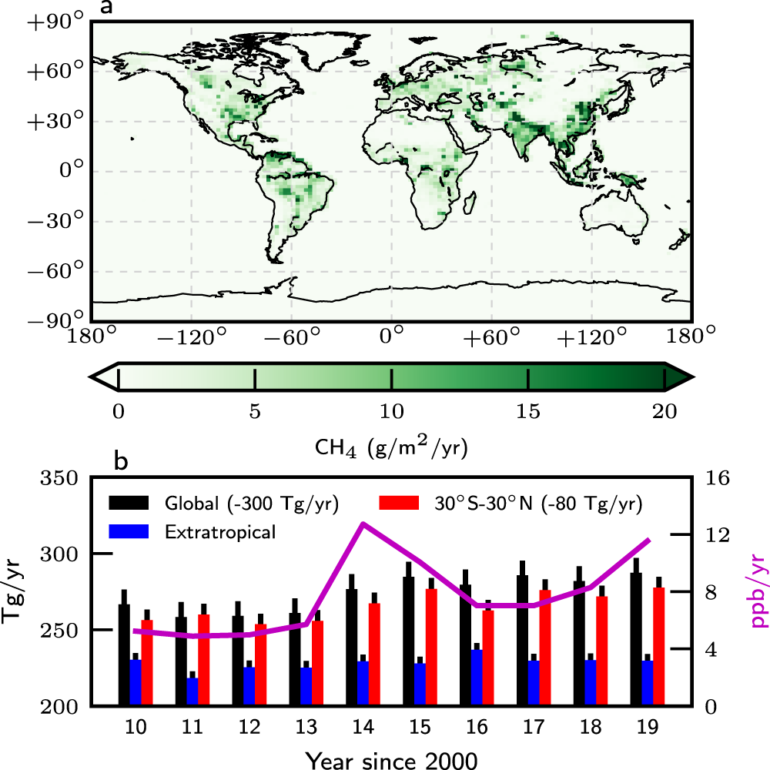An international team of researchers has revealed that tropical terrestrial methane (CH4) emissions explain more than 80% of the observed changes in the global atmospheric methane growth rate over 2010–2019.
The study was published in Nature Communications on March 16.
CH4 is the primary non-carbon dioxide (CO2) greenhouse gas. “On the 20-year scale, the warming effect of CH4 is 84 times that of CO2,” said Prof. Liu Yi from the Institute of Atmospheric Physics (IAP) of the Chinese Academy of Sciences.
Methane has a short life (about one-tenth of carbon dioxide), and its emission reduction can achieve the purpose of restraining the rapid global warming in a short time.
The researchers have found that methane concentration in the atmosphere has more than doubled since the pre-industrial era, contributing 20% of present-day human-induced global warming. Tropical terrestrial CH4 emissions, as the main contributor, represent ~60% of the global totals and describe 84% of the global annual mean growth rate in the 2010s.
Meanwhile, for the first time, the researchers found strong seasonal correlations in sea surface temperature over the tropical oceans and regional variations in methane emissions (via changes in rainfall and temperature) over tropical South America and tropical Africa.
“Sea surface temperature variations could be used to help forecast variations in global atmospheric CH4,” said paper author Liang Feng from the University of Edinburgh in the UK.
In the future, the team will further use multi-platform observations to report methane emissions in China to provide scientific and technological support for China’s goal of carbon neutrality.
More information:
Liang Feng et al, Tropical methane emissions explain large fraction of recent changes in global atmospheric methane growth rate, Nature Communications (2022). DOI: 10.1038/s41467-022-28989-z
Provided by
Chinese Academy of Sciences
Citation:
Tropical methane emissions contribute greatly to recent changes in global atmospheric methane growth rate (2022, March 16)



